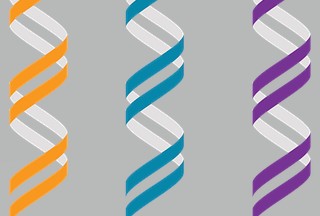‘All of Us’ genetics chart stirs unease over controversial depiction of race
By Max Kozlov,
Nature
| 02. 23. 2024
Some geneticists have expressed their unease about a figure in a high-profile Nature paper that was published earlier this week1, noting that it could be misinterpreted as reinforcing racist beliefs. The figure has reignited a long-standing debate among geneticists about how best to discuss and depict race, ethnicity and genomic ancestry, given how these terms can be misinterpreted and weaponized by extremists.
“The problem is, a lot of people will see figures like this as supporting a viewpoint” that race and ethnicity are closely aligned with genetics, says Ewan Birney, deputy director-general of the European Molecular Biology Laboratory in Cambridgeshire, UK. “And then they build castles in the air from all this.”
Alexander Bick, a physician and geneticist at Vanderbilt University Medical Center in Nashville, Tennessee, who co-authored the paper in which the figure appears, acknowledged in an e-mail to Nature’s news team that “it’s clear that the figure fell short of our intended goal for this paper”. (Nature’s news team is editorially independent of its journal team.) But Bick defended the analysis, noting...
Related Articles
By Josie Ensor, The Times | 12.09.2025
A fertility start-up that promises to screen embryos to give would-be parents their “best baby” has come under fire for a “misuse of science”.
Nucleus Genomics describes its mission as “IVF for genetic optimisation”, offering advanced embryo testing that allows...
By Hannah Devlin, The Guardian | 12.06.2025
Couples undergoing IVF in the UK are exploiting an apparent legal loophole to rank their embryos based on genetic predictions of IQ, height and health, the Guardian has learned.
The controversial screening technique, which scores embryos based on their DNA...
By Frankie Fattorini, Pharmaceutical Technology | 12.02.2025
Próspera, a charter city on Roatán island in Honduras, hosts two biotechs working to combat ageing through gene therapy, as the organisation behind the city advertises its “flexible” regulatory jurisdiction to attract more developers.
In 2021, Minicircle set up a...
By Vardit Ravitsky, The Hastings Center | 12.04.2025
Embryo testing is advancing fast—but how far is too far? How and where do we draw the line between preventing disease and selecting for “desirable” traits? What are the ethical implications for parents, children, clinicians, and society at large? These...




